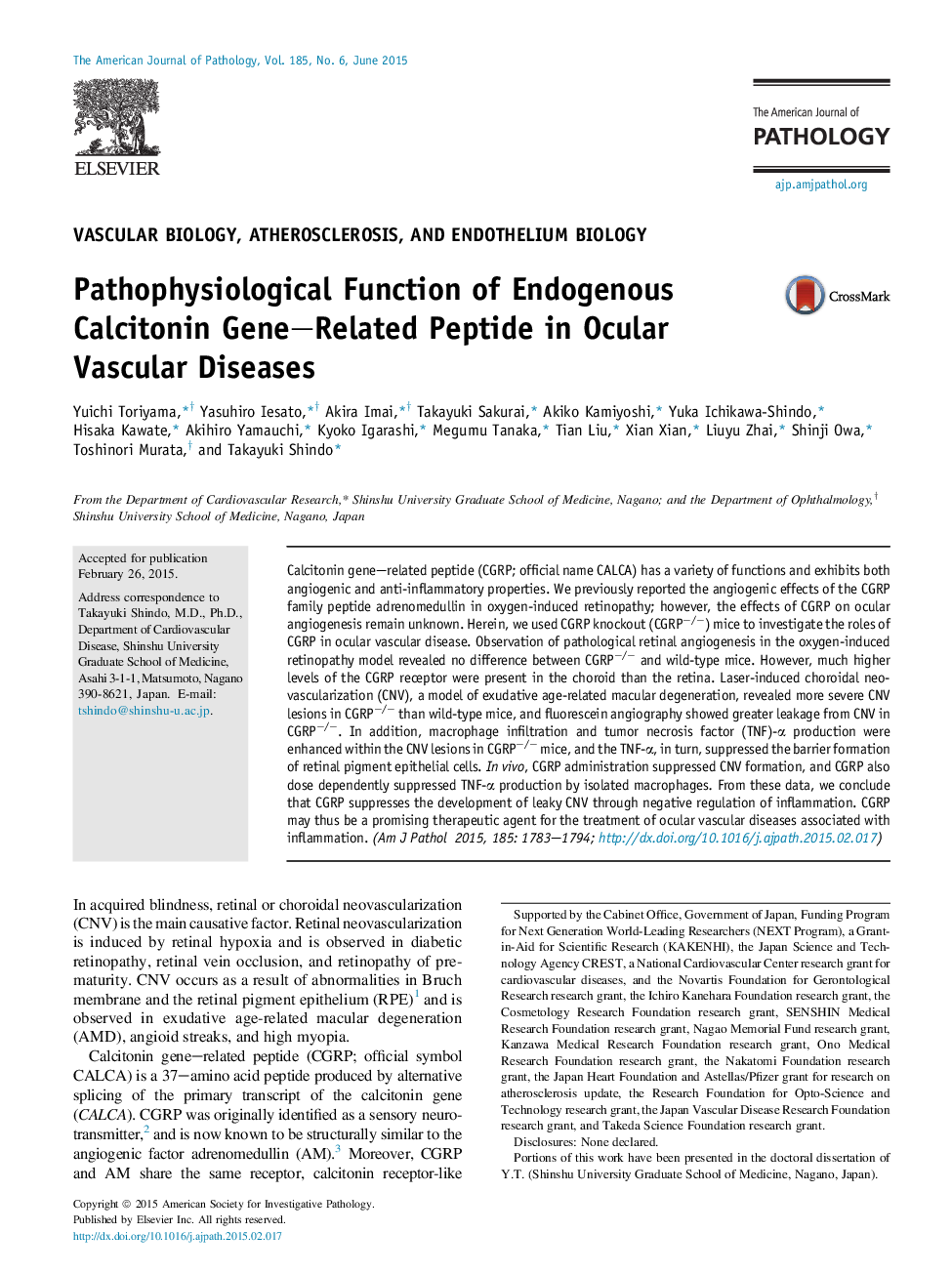| Article ID | Journal | Published Year | Pages | File Type |
|---|---|---|---|---|
| 5932675 | The American Journal of Pathology | 2015 | 12 Pages |
Abstract
Calcitonin gene-related peptide (CGRP; official name CALCA) has a variety of functions and exhibits both angiogenic and anti-inflammatory properties. We previously reported the angiogenic effects of the CGRP family peptide adrenomedullin in oxygen-induced retinopathy; however, the effects of CGRP on ocular angiogenesis remain unknown. Herein, we used CGRP knockout (CGRPâ/â) mice to investigate the roles of CGRP in ocular vascular disease. Observation of pathological retinal angiogenesis in the oxygen-induced retinopathy model revealed no difference between CGRPâ/â and wild-type mice. However, much higher levels of the CGRP receptor were present in the choroid than the retina. Laser-induced choroidal neovascularization (CNV), a model of exudative age-related macular degeneration, revealed more severe CNV lesions in CGRPâ/â than wild-type mice, and fluorescein angiography showed greater leakage from CNV in CGRPâ/â. In addition, macrophage infiltration and tumor necrosis factor (TNF)-α production were enhanced within the CNV lesions in CGRPâ/â mice, and the TNF-α, in turn, suppressed the barrier formation of retinal pigment epithelial cells. In vivo, CGRP administration suppressed CNV formation, and CGRP also dose dependently suppressed TNF-α production by isolated macrophages. From these data, we conclude that CGRP suppresses the development of leaky CNV through negative regulation of inflammation. CGRP may thus be a promising therapeutic agent for the treatment of ocular vascular diseases associated with inflammation.
Related Topics
Health Sciences
Medicine and Dentistry
Cardiology and Cardiovascular Medicine
Authors
Yuichi Toriyama, Yasuhiro Iesato, Akira Imai, Takayuki Sakurai, Akiko Kamiyoshi, Yuka Ichikawa-Shindo, Hisaka Kawate, Akihiro Yamauchi, Kyoko Igarashi, Megumu Tanaka, Tian Liu, Xian Xian, Liuyu Zhai, Shinji Owa, Toshinori Murata, Takayuki Shindo,
